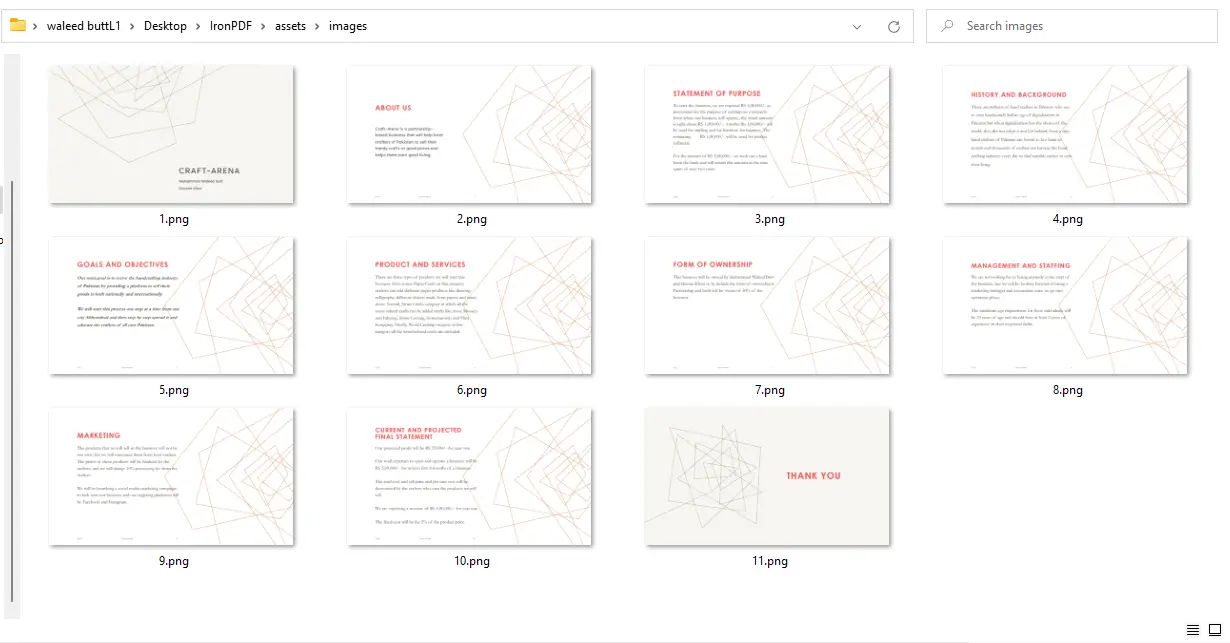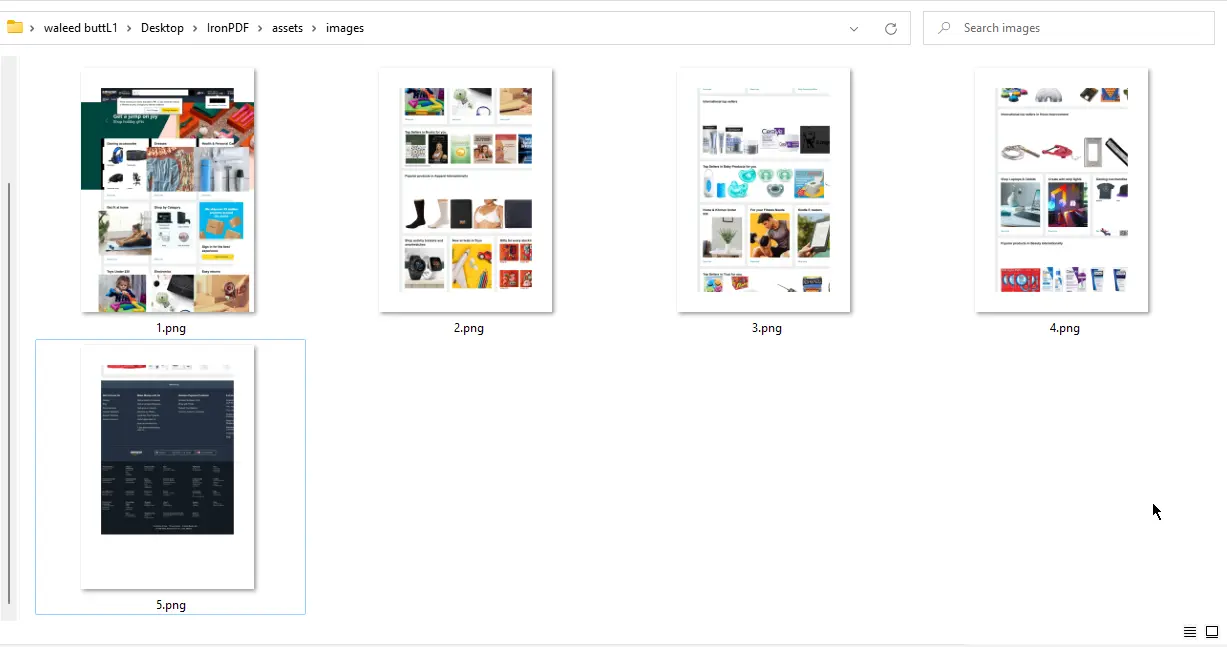Python PDF to Image file
1. Introduction
The conversion of PDF pages or documents to image files, such as JPEG, PNG, or TIFF, serves multiple purposes in the software industry. There are instances where you may require an image representation of specific pages from a PDF file to be used in various contexts. Resorting to taking screenshots of each page is often impractical. However, when working on a Python project that involves loading and converting PDF pages into image files for further utilization, traditional Python code falls short. This is where the power and versatility of IronPDF for Python come into play, enabling seamless and efficient PDF-to-image conversion..
How to Convert PDF to Image in Python
- Install the Python library for converting PDF to various image formats
- Utilize the
RasterizeToImageFilesmethod to convert a PDF to images - Convert a URL to images by first obtaining the PDF using the
RenderUrlAsPdfmethod - Apply step 2 to convert the PDF into the desired image format
- Specify higher DPI to improve the image clarity
2. IronPDF for Python
IronPDF for Python offers a range of functionalities, from creating and managing PDF documents to modifying them without the need for Adobe Acrobat. With IronPDF for Python, developers can effortlessly generate PDF files, incorporate custom headers and footers, implement security measures like passwords and encryption, and even handle attachments and signatures. The package is designed for optimal performance, boasting features such as multithreading and async support.
In the upcoming sections, we'll explore the process of converting PDF pages to popular image formats like JPEG, JPG, or PNG using Python.
3. Convert PDF File to Images using IronPDF for Python
To convert a PDF document to images, you can utilize the RasterizeToImageFiles method provided by IronPDF for Python. This method allows you to generate image files, such as JPEG, from the PDF document. The asterisk (*) symbol in the method represents the page number, starting from 1, and will be replaced accordingly.
In case the output images appear blurry, you can consider increasing the DPI (dots per inch) value. However, note that this may result in longer rendering times.
IronPDF for Python offers more than just PDF-to-image conversion. It also enables you to create images directly from URLs and HTML sources.
3.1. Convert a PDF Document to Images
The following example demonstrates how to convert an entire PDF document to images.
from ironpdf import *
pdf = PdfDocument.FromFile("my-content.pdf")
# Extract all pages to a folder as image files
pdf.RasterizeToImageFiles("assets/images/*.png",DPI=96)In the following example, the output images will be saved in the "assets/images" folder within your project. Prior to running the program, please ensure that you have created this folder.
The image files will be named starting from 1 and will be incremented for each page of the PDF document.
3.2. Convert URL to PDF and PDF to Images
With IronPDF for Python, you have the capability to convert HTML to PDF directly and subsequently convert each page of the resulting PDF into images.
For the upcoming example, let's consider the Amazon website. The following program will render a specific page from Amazon.com as a PDF and then save each page of the PDF as separate images within an "assets/images" folder.
from ironpdf import *
# Instantiate Renderer
renderer = ChromePdfRenderer()
# Create a PDF from a URL or local file path
pdf = renderer.RenderUrlAsPdf("https://www.amazon.com/?tag=hp2-brobookmark-us-20")
# Extract all pages to a folder as image files
pdf.RasterizeToImageFiles("assets/images/*.png",DPI=96)In order to adjust the size of the images generated from the previous example, you can specify the desired width and height by setting the ImageMaxWidth and ImageMaxHeight parameters. These parameters are measured in pixels.
When setting the dimensions, it's important to note that the aspect ratio of the page will be maintained, taking the height parameter into consideration.
pdf.RasterizeToImageFiles("assets/images/*.png", ImageMaxWidth=500, ImageMaxHeight=500, DPI=200)Conclusion
In this guide, we have explored the process of converting PDFs into images using IronPDF for Python. The resulting images obtained from IronPDF include both the page number, as demonstrated in the previous examples. IronPDF supports a variety of image formats, including JPEG, JPG, TIFF, and more.
One of the advantages of using IronPDF is the ability to customize the image resolution according to your specific requirements. For further information on IronPDF for Python and to access additional guides on working with PDFs using Python, please visit the following link. To delve deeper into the topic of converting PDFs to images, you can refer to this link.
Please note that while IronPDF for Python is free for development purposes, a license is required for commercial use. For detailed information regarding the licensing terms, please visit link.
Download the software product.























